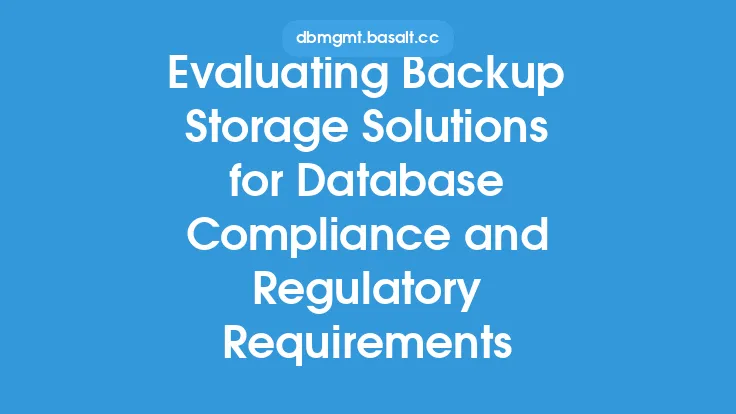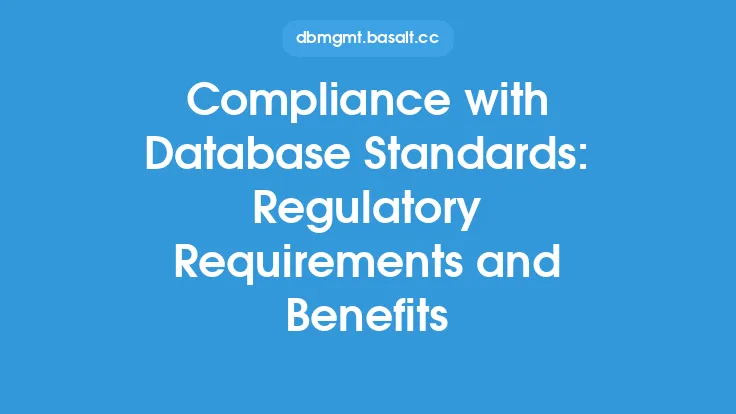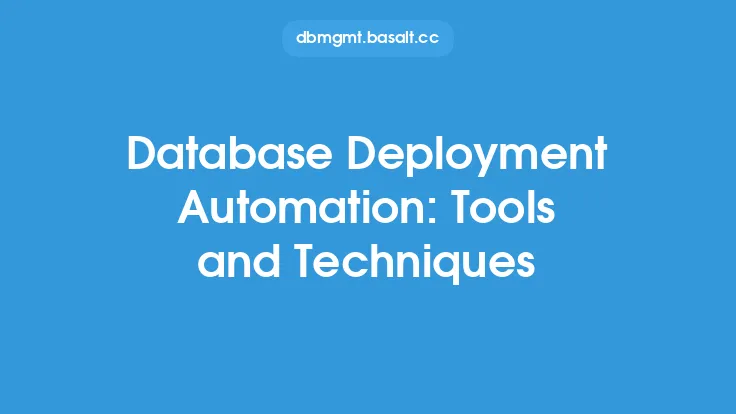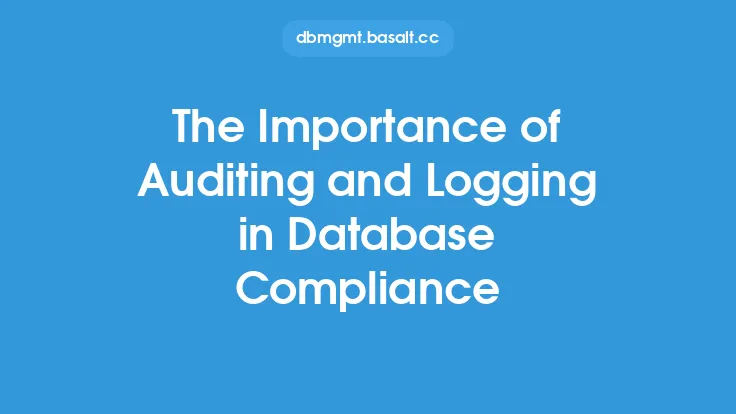Deploying a database is a complex process that involves not only technical considerations but also compliance with various regulatory requirements. As organizations increasingly rely on databases to store and manage sensitive data, ensuring that database deployments meet regulatory standards is crucial to avoid legal and financial repercussions. In this article, we will delve into the world of database deployment and compliance, exploring the key regulatory requirements, challenges, and best practices for ensuring that database deployments meet the necessary standards.
Introduction to Regulatory Requirements
Regulatory requirements for database deployment vary depending on the industry, location, and type of data being stored. Some of the most notable regulations include the General Data Protection Regulation (GDPR) in the European Union, the Health Insurance Portability and Accountability Act (HIPAA) in the United States, and the Payment Card Industry Data Security Standard (PCI DSS) for organizations that handle credit card information. These regulations dictate how data should be collected, stored, processed, and protected, and organizations must ensure that their database deployments comply with these standards.
Data Protection and Privacy
One of the primary concerns in database deployment is data protection and privacy. Regulations such as GDPR and HIPAA require organizations to implement robust security measures to protect sensitive data, including encryption, access controls, and auditing. Database administrators must ensure that data is encrypted both in transit and at rest, and that access to the database is restricted to authorized personnel only. Additionally, organizations must have procedures in place for responding to data breaches and notifying affected individuals, as required by regulations such as GDPR.
Access Control and Authentication
Access control and authentication are critical components of database deployment and compliance. Organizations must ensure that only authorized personnel have access to the database, and that access is granted based on the principle of least privilege. This means that users should only have the necessary permissions to perform their jobs, and that access should be revoked when it is no longer needed. Database administrators must also implement robust authentication mechanisms, such as multi-factor authentication, to prevent unauthorized access to the database.
Auditing and Logging
Auditing and logging are essential for ensuring compliance with regulatory requirements. Organizations must be able to track all changes to the database, including data modifications, schema changes, and access attempts. This requires implementing auditing and logging mechanisms that can capture and store detailed information about database activity. Database administrators must also ensure that audit logs are properly configured, stored, and protected to prevent tampering or unauthorized access.
Compliance Frameworks and Standards
To ensure compliance with regulatory requirements, organizations can adopt compliance frameworks and standards such as COBIT, ISO 27001, and NIST Cybersecurity Framework. These frameworks provide a structured approach to managing database deployment and compliance, and can help organizations identify and mitigate risks. Database administrators must familiarize themselves with these frameworks and standards, and implement the necessary controls and procedures to ensure compliance.
Challenges and Best Practices
Ensuring compliance with regulatory requirements can be a challenging task, especially for organizations with complex database environments. Some of the common challenges include lack of resources, inadequate training, and insufficient budget. To overcome these challenges, organizations can adopt best practices such as implementing automated compliance tools, providing regular training and awareness programs, and allocating sufficient budget for compliance initiatives. Database administrators must also stay up-to-date with changing regulatory requirements and industry standards, and continuously monitor and assess the database environment for compliance risks.
Technical Considerations
From a technical perspective, ensuring compliance with regulatory requirements requires careful consideration of database design, configuration, and management. Database administrators must ensure that the database is properly configured to meet regulatory requirements, including data encryption, access controls, and auditing. This may involve implementing specific database features, such as row-level security or data masking, to protect sensitive data. Additionally, database administrators must ensure that the database is properly patched and updated to prevent security vulnerabilities, and that backup and recovery procedures are in place to ensure business continuity.
Conclusion
In conclusion, database deployment and compliance are critical aspects of database management that require careful consideration of regulatory requirements, technical considerations, and best practices. Organizations must ensure that their database deployments meet the necessary standards to avoid legal and financial repercussions, and to protect sensitive data. By adopting compliance frameworks and standards, implementing robust security measures, and staying up-to-date with changing regulatory requirements, organizations can ensure that their database deployments are compliant and secure. Ultimately, ensuring compliance with regulatory requirements is an ongoing process that requires continuous monitoring, assessment, and improvement to ensure the integrity and security of the database environment.





